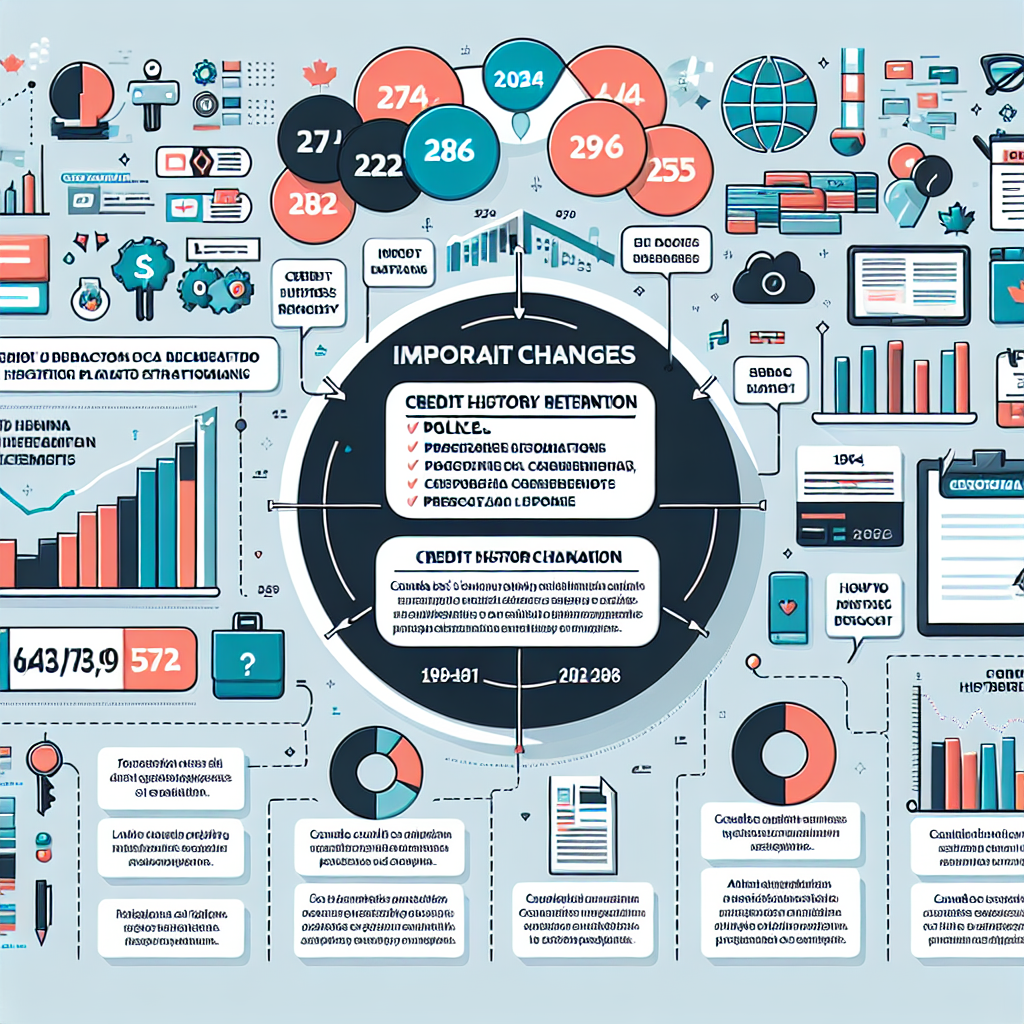Navigating the landscape of credit in Canada is about to undergo a significant transformation with the introduction of the Canadian credit history retention period 2024. For many consumers and lenders, understanding these changes is not just a matter of staying informed—it’s crucial for maintaining financial health and mitigating potential risks. As credit scores increasingly dictate loan eligibility, interest rates, and even rental agreements, the implications of how long credit information is retained can profoundly impact your financial future. This article delves into the upcoming changes, providing insights that will empower readers to make informed decisions.
Navigating the Changes in Canada’s Credit History Policies
In 2024, Canada will see a revision of its credit history retention policies, which will redefine how long negative information remains on credit reports. Currently, derogatory marks can linger for up to six years, but under the new regulations, that period is expected to be shortened significantly. This shift is designed to align with consumer protection goals, as excessive retention of negative data can hinder individuals from accessing fair credit opportunities. With these updates, many Canadians may find a renewed sense of hope in achieving financial stability.
The rationale behind this adjustment stems from growing concerns about the long-term effects of negative credit information on individuals’ lives. Research indicates that prolonged retention of such data disproportionately affects low-income families and those recovering from financial hardships, perpetuating cycles of economic disadvantage. By reducing the retention period, the Canadian government aims to facilitate a more equitable system, providing individuals with a quicker path to rebuilding their creditworthiness after financial setbacks. This change represents a pivotal moment in recognizing the need for a more compassionate approach to credit evaluation.
For consumers, understanding these changes is imperative. It’s not just about the numbers; it’s about the broader implications for financial health. Those burdened by old debts may find themselves presented with new opportunities, such as obtaining loans or mortgages that were previously out of reach. As lenders implement these revised policies, consumers must stay proactive—monitoring their credit reports and understanding their rights under the new regulations will be key to leveraging this game-changing adjustment.
Key Impacts of 2024 Retention Rules on Consumers and Lenders
The modified retention policies will significantly influence the credit landscape for consumers. One notable benefit is the potential for quicker recovery from past financial mistakes. With negative information being removed sooner, individuals may experience an uptick in their credit scores faster than ever before. This improvement in scores can lead to better access to credit products, including lower interest rates and more favorable loan terms. Consequently, consumers who have faced previous financial hardships will have a more streamlined path toward rebuilding their financial profiles.
However, these changes are not only advantageous for consumers; lenders will also need to adapt their risk assessment strategies. With a reduced window for viewing negative credit history, financial institutions may rely more heavily on alternative data to gauge the creditworthiness of potential borrowers. This shift could lead to a more nuanced approach in evaluating applicants, as lenders may incorporate factors like employment history, savings patterns, and even utility payment history into their decision-making processes. For lenders, the ability to adjust to these changes will be critical in maintaining a competitive edge in a rapidly evolving market.
Moreover, a shift in public perception about credit scores can be anticipated. As consumers become aware of the reduced retention periods, they may feel empowered to take control of their financial narratives. This newfound knowledge can foster a more proactive attitude toward financial management, encouraging individuals to engage in practices that enhance their credit profiles. As the credit landscape shifts, both consumers and lenders must embrace these changes, ensuring that they are equipped to navigate this evolving realm effectively.
In conclusion, understanding Canada’s 2024 credit history retention policies is vital for anyone engaged in financial planning or lending. As consumers gain insights into these changes, they will be better positioned to recover from past financial setbacks and capitalize on newfound opportunities. Lenders, in turn, must evolve their strategies to align with these developments to remain competitive. By staying informed and proactive, individuals and institutions alike can adapt to this new landscape, leveraging it to foster a more equitable financial ecosystem. As these changes unfold, consider monitoring your credit report, seeking advice from financial experts, and exploring the vast resources available to navigate this transformative period in Canadian credit history.
Navigating Credit Report Corrections in Canada: 2024 GuideExploring 2024 Options for Canadian Credit Card Debt ConsolidationDebunking 2024 Myths About Canadian Credit ScoresRelevant LinkRelevant LinkRelevant LinkNavigating Credit Report Corrections in Canada: 2024 GuideExploring 2024 Options for Canadian Credit Card Debt ConsolidationDebunking 2024 Myths About Canadian Credit ScoresRelevant LinkRelevant LinkRelevant LinkNavigating Payday Loans in Canada: A Bad Credit DilemmaExploring Alberta’s Online Payday Loan Landscape: Risks and RealitiesNavigating the Payday Loan Landscape in Victoria, BCRelevant LinkRelevant LinkRelevant Link



